By: Joe Holz, Director of Sales | Originally Posted: Feb. 10, 2016 | Updated: June 6, 2022
____________________________________________________________________________________________
Emergent aquatic plants typically grow along the banks of ponds or lakes, or in shallow marshy areas. Some may not be considered aquatic vegetation, but can still survive in wet soils for an extended period. Unlike submerged vegetation, emergent plants are rigid and can stand on their own without support from water.
Emergent vegetation can be considered desirable or undesirable. It all depends on balance and what you like to see. These can be very beneficial as a nutrient buffer, as they manage to block or at least slow down nutrients that are entering the pond due to runoff. Emergent plants also serve to stabilize the shoreline and reduce erosion. Deep rooted vegetation keeps the shoreline intact. Furthermore, desirable emergent plants provide wildlife with food and habitat.
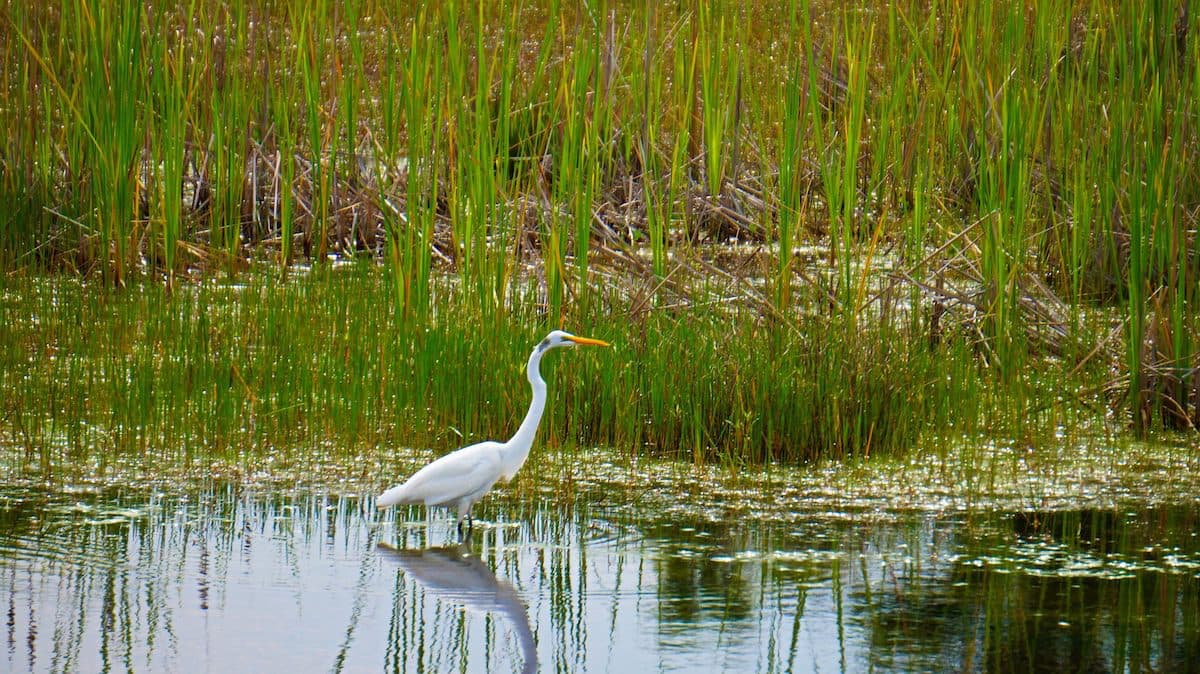
Below are a few common emergent aquatic plants and some information about them.
Pickerel Rush (Pontederia cordata)
Pickerel Rush is an aquatic plant that produces a purple flower. It is often sold in water garden stores as it is great for the banks of ponds and water gardens. It uses up and blocks some of the runoff nutrients entering the pond and they add a touch of beauty to your body of water.
Cattails (Typha spp.)
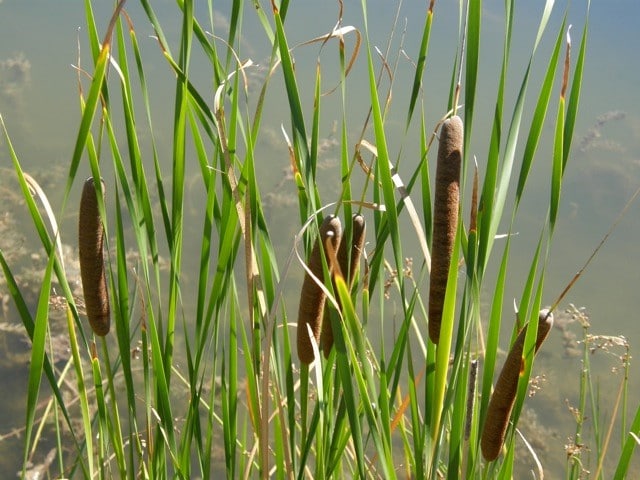
Cattails are probably the most recognizable emergent aquatic plant in and around water. They have tall stalks or stems with long green leaves as well as a very recognizable 6-8” brown cylindrical spike. This spike produces seeds that are needed for reproduction. Cattails serve as a shelter for wildlife and as a food source for aquatic rodents, such as Muskrats. However, they can spread rapidly if not controlled.
Arrowhead (Syngonium spp.)
There are several species within the arrowhead family. This plant is named after its “arrowhead” shaped leaves. It has white flowers that are in whorls of 3 with a yellow center. Arrowhead is a good plant to use for soaking up nutrients. Regardless, it needs to be kept in check to prevent over population.

Bog Moss (Mayaca fluviatilis)
Bog Moss is usually found in wetlands or wet areas around ponds in creeping mats. It is a small, dark green branched plant with leaves spirally arranged on the stem. Additionally, it produces small pick flowers that have 3 petals. Bog Moss serves to block runoff nutrients from entering the water.
Water Primrose (Ludwigia spp.)
Water Primrose can be an emergent aquatic plant or a submerged one depending on the species. It has stems that grow horizontally that produce leaves which alternate along them, and it has wiry roots. The stems become erect during the flowering stage. Depending on the species and location, they usually bloom from April to September. Generally, Water Primroses are considered to be a desirable aquatic plant.
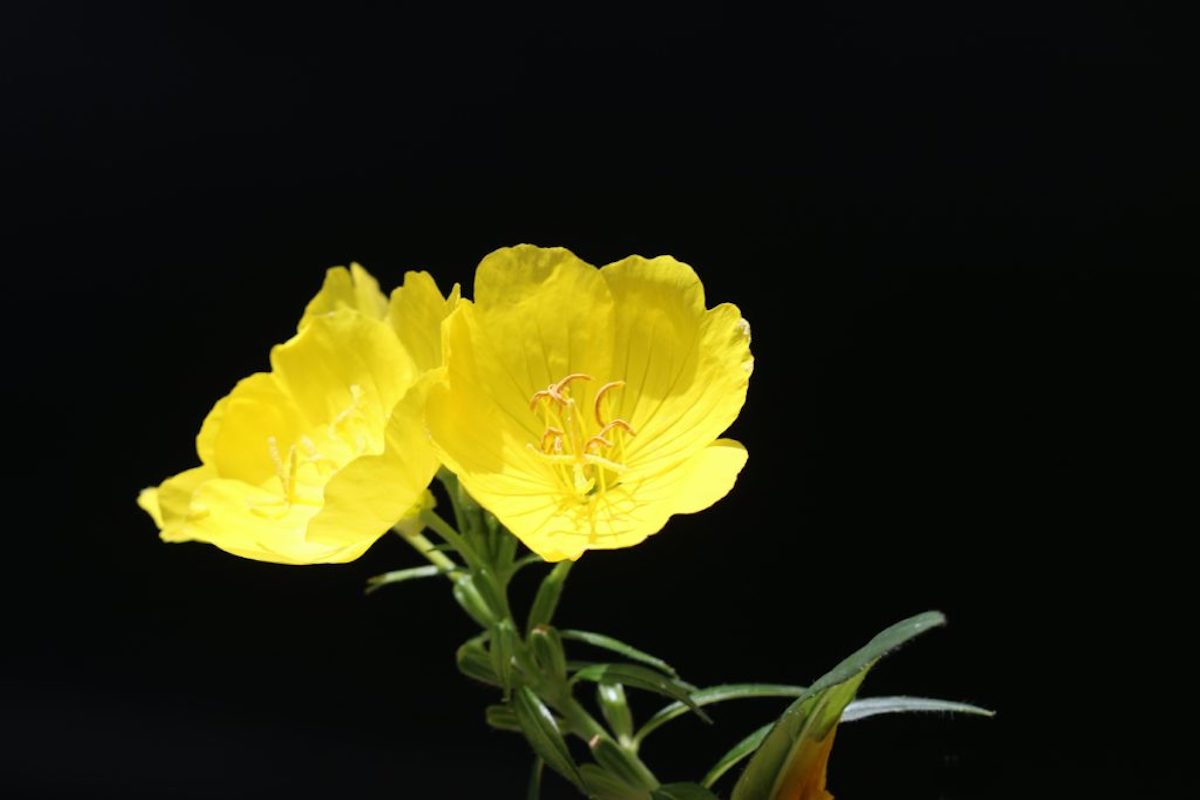
Spikerush (Eleocharis spp.)
Spikerush cover a wide range of species. They get their name from their stems that are topped with a terminal spike. Most grow in moist soil, shallow ponds, marshes, and wetlands. Spikerush can cover many acres and serve as a shelter for certain wildlife. Certain species of Spikerush are used as a food source for birds and other animals, as well as for human consumption.
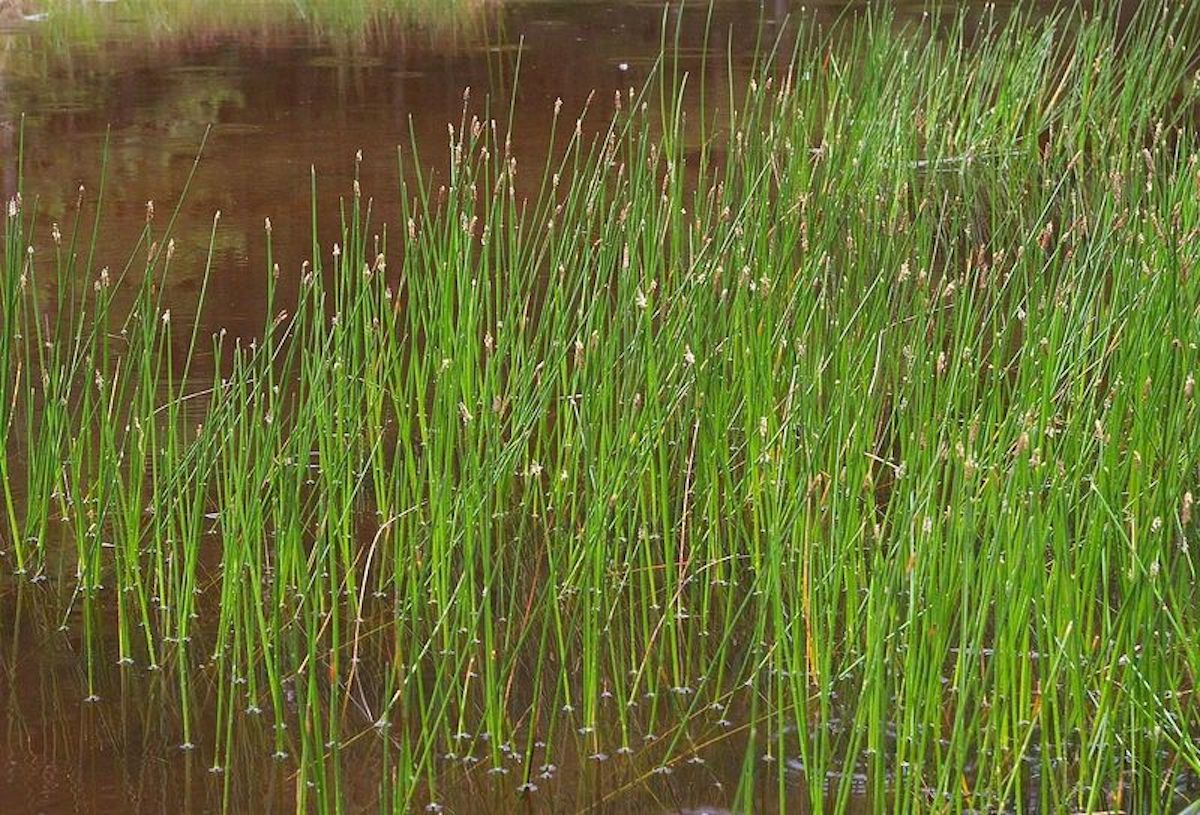
If you have any questions, please email us or call 715-262-4488
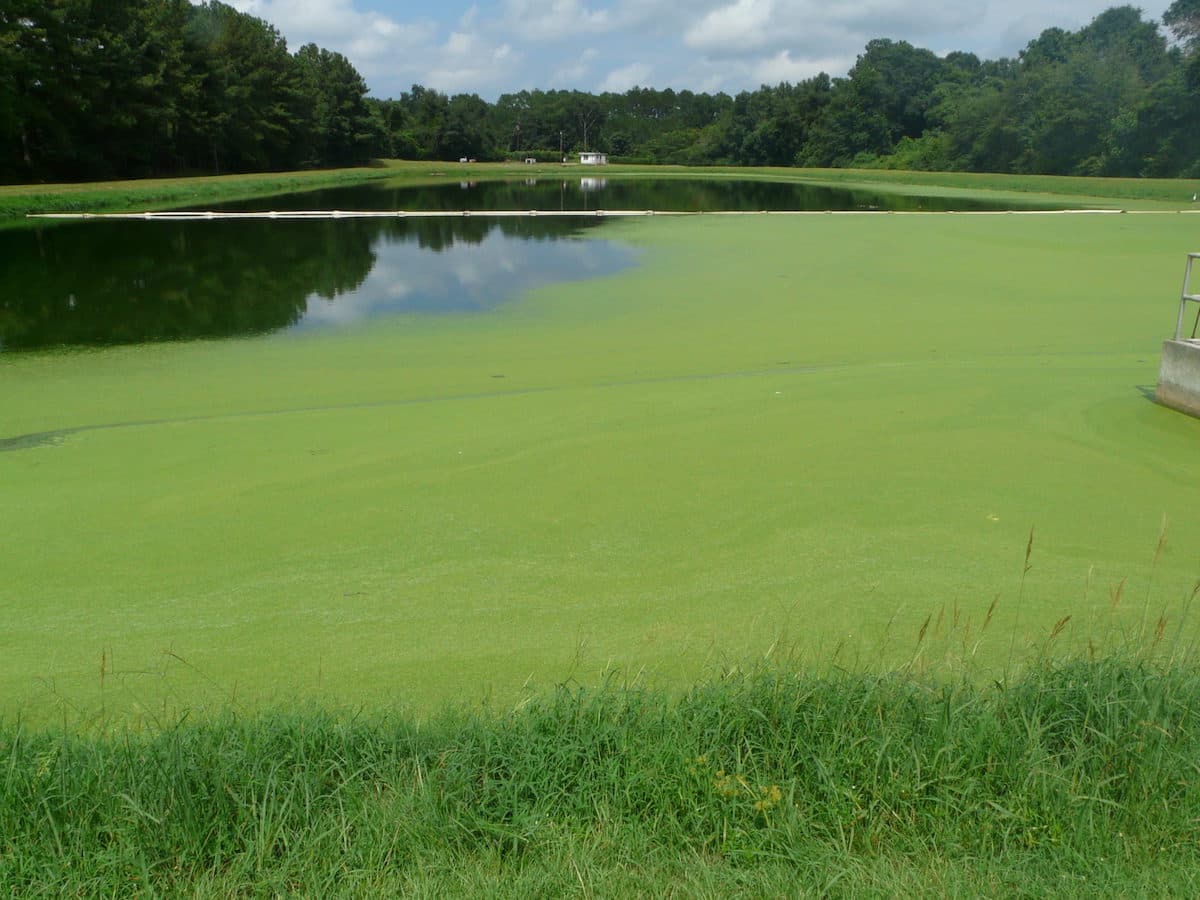 Common Floating Plant Identification
Common Floating Plant Identification
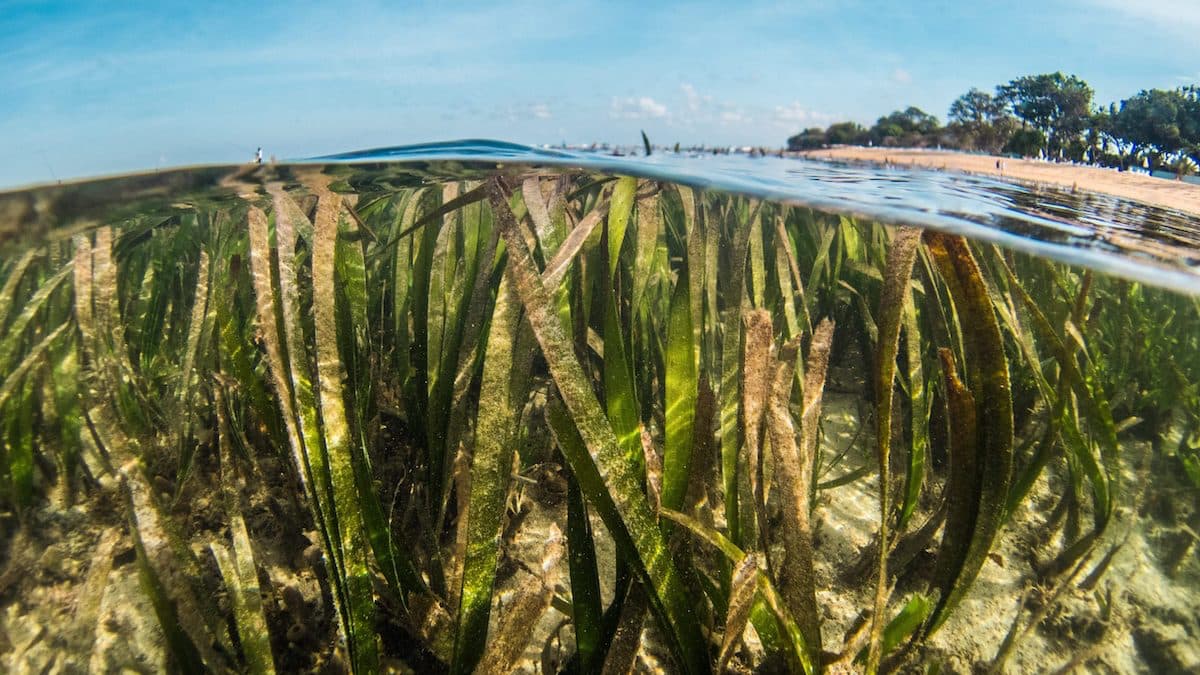 3 Types of Aquatic Plants to Watch for This Spring
3 Types of Aquatic Plants to Watch for This Spring
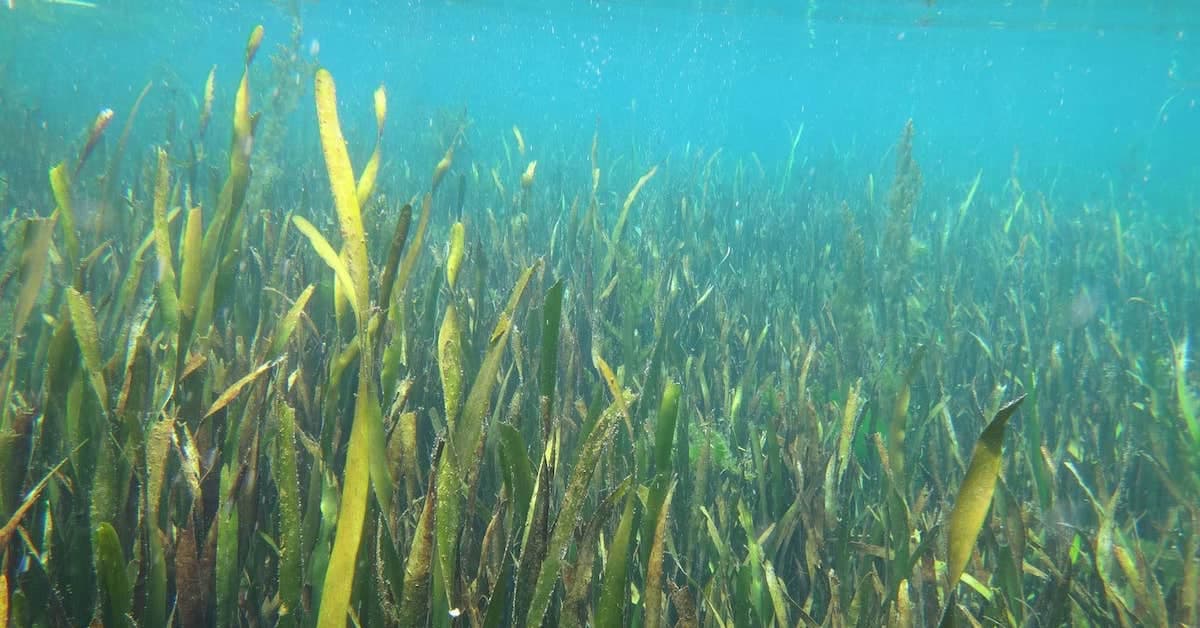 Common Submerged Aquatic Plants
Common Submerged Aquatic Plants